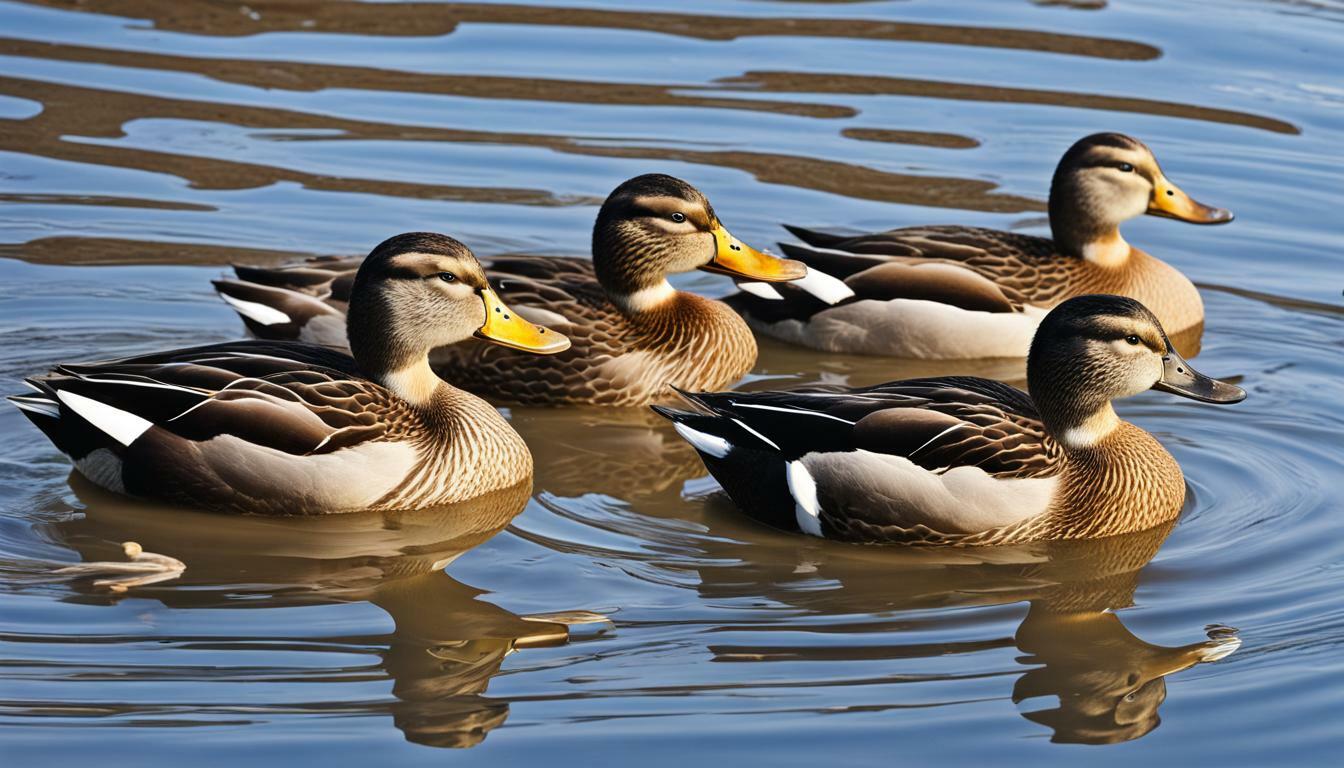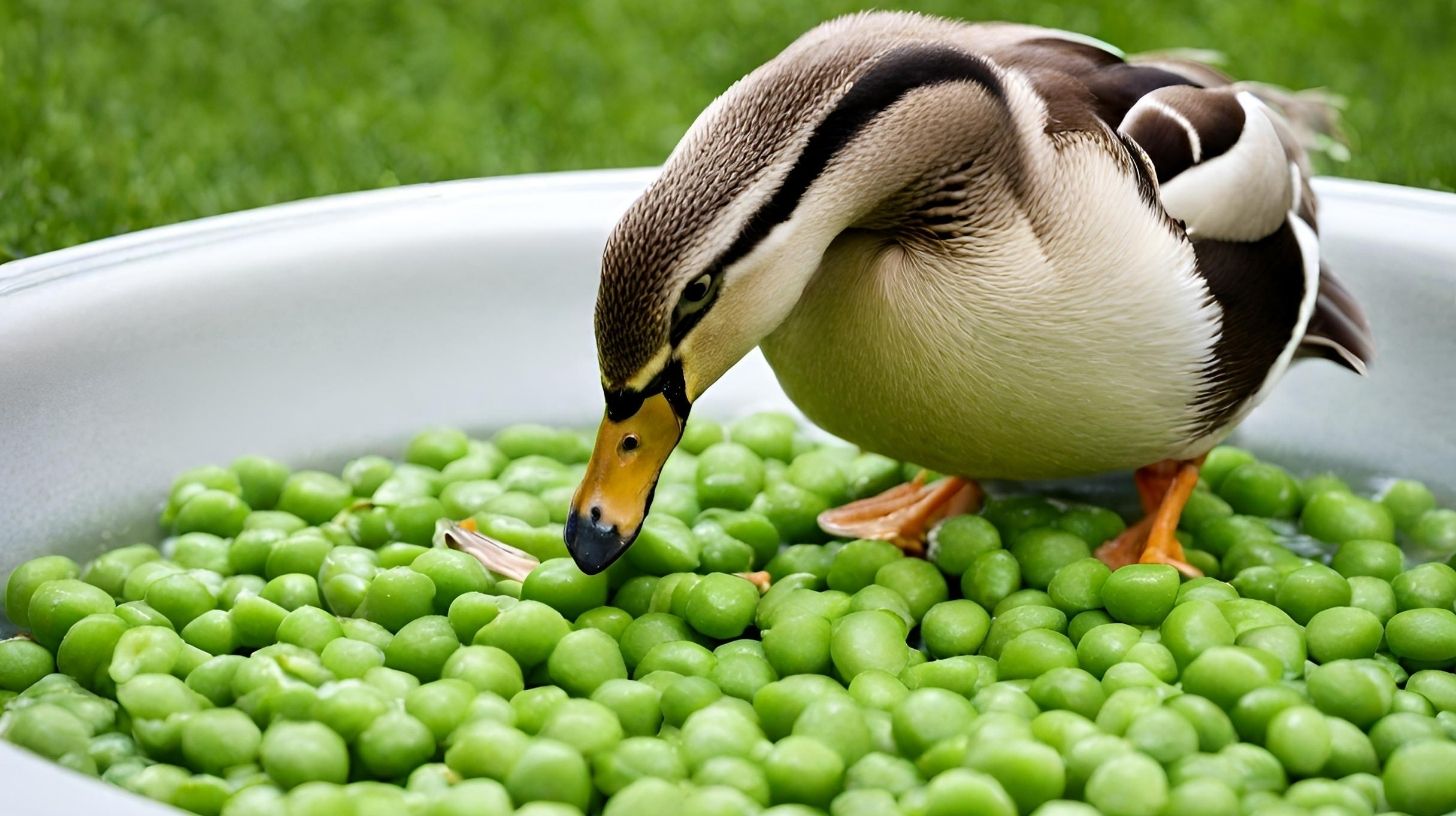How Fast Can Ducks Swim? Amazing Duck Swimming Speed Facts

Table of content:
- How Fast Can a Duckling Swim?
- What is the Average Swimming Speed of a Duck?
- How Fast Can Wild Ducks Swim Compared to Domestic Ducks?
- What Duck Breed Can Swim the Fastest?
- How Do a Duck’s Webbed Feet Help It Swim Fast?
- At What Age Do Ducklings Start to Swim and How Fast Can They Swim?
- How Does the Size of a Duck Affect How Fast It Can Swim?
- Conclusion
Ducks are aquatic birds known for their ability to swim and float on water. With their webbed feet, streamlined bodies, and water-resistant feathers, ducks are built for speed and agility in the water. But exactly how fast can ducks swim?
How Fast Can a Duckling Swim?
Newly hatched ducklings take to the water like pros. But how fast can a duckling swim compared to adult ducks?
Ducklings begin swimming immediately after hatching. They can paddle and dive right away thanks to being buoyant and having partially developed webbed feet. However, new ducklings do tire easily. They must rest every few feet.
Within the first week, ducklings gain strength and coordination. They can swim up to 2 miles per hour for short bursts. Still, they swim slowly for the most part, staying close to the mother duck for protection.
At 3-4 weeks old, ducklings grow quick burst muscles that let them flee predators. They can achieve speeds up to 6 mph for dodging and sprinting. But these fast paddling spurts quickly exhaust the young ducks.
By 5-6 weeks old, ducklings nearly match the cruising speed of adult ducks. They can swim steadily at 3-4 mph and sprint in bursts over 7 mph. Their feet are fully webbed by this age, increasing paddling power.
So while new ducklings start out rather slow, they rapidly gain speed and stamina. Within a month or two, they can swim at pace with mature ducks. Their fast development ensures they can dive, forage, and travel with the flock.
What is the Average Swimming Speed of a Duck?
Ducks employ various speeds depending on their activity. What is their average cruising speed during day-to-day swimming?
The average leisurely swimming speed for adult ducks is 3-4 miles per hour. This allows them to migrate, float along with the flock, and maneuver while foraging. Ducks can comfortably maintain this pace for hours.
Ducks shift between relaxed paddling and brisk swimming as needed. When traversing longer distances, they may pick up the pace to 5-8 mph. Still, their median preferred speed is about 4 mph.
Diving to forage adds brief bursts of speed. Ducks can rapidly plunge down 2-3 feet to snatch food. Their streamlined shape and webbed feet provide agility to dart and change direction.
Overall, the moderate cruising speed of 3-4 mph suits most dabbling ducks’ needs for daily swimming. However, some ducks are bred for greater speeds.
How Fast Can Wild Ducks Swim Compared to Domestic Ducks?
Do wild ducks swim faster than their domesticated counterparts? Let’s compare their swimming capabilities.
In the wild, ducks must swim swiftly and efficiently to find food, escape predators, and migrate. Selective pressures favor wild ducks with superior swimming traits.
Wild ducks typically exhibit greater speed and endurance than domestic breeds. Their average cruising speed is 5-6 mph versus 3-4 mph for domestic ducks. And wild ducks can sprint at up to 10 mph in bursts.
The most agile wild ducks can swiftly change direction while maintaining speed. This helps them snatch food and dodge predators in water. Wild ducks also have stronger legs and lungs to keep swimming for hours without tiring.
In contrast, domestic ducks are bred more for egg and meat production than athleticism. Many popular breeds like Pekins and Calls have heavy, plump bodies that limit speed. Their legs are proportionally small and less muscular than wild ducks.
Still, active foraging does help domestic ducks retain some swimming ability. Muscovy and Mallard domestic ducks can reach speeds of 5-6 mph, approaching their wild counterparts. But most domestic breeds max out around the 3-4 mph average speed.
What Duck Breed Can Swim the Fastest?
While all ducks are designed for swimming, some breeds are speedier than others. What duck type can swim the fastest?
The Muscovy duck is considered the fastest domestic duck breed. Native to Mexico and the Americas, it swims at speeds up to 10 mph. Its long, muscular legs have less webbing but more propulsive power.
Mallard derivatives like the Black Duck, Cayuga, and Swedish Duck also swim quickly. As the wild progenitor to domestic ducks, the Mallard is adapted for swift swimming up to 8 mph. Mallard breeds retain these athletic traits.
Runner ducks, aptly named for their ability to run and swim briskly, can also achieve speeds over 5 mph. Their streamlined bodies and strong legs enable rapid movement on land and in water.
In contrast, heavy Pekin ducks with their meaty breasts struggle to swim faster than 3 mph. Their plumper bodies create drag in the water. But what Pekins lack in speed, they make up for in floating ability.
While not built for racing speeds, most domestic ducks can swim sufficiently to forage and float. Muscovies, Mallards, and Runners shine as the fastest ducks on water.
How Do a Duck’s Webbed Feet Help It Swim Fast?
A duck’s webbed feet provide immense swimming propulsion. How exactly do these unique feet maximize speed?
Ducks have webbing that connects all four of their toes on each foot. When paddling, they spread their toes to catch more water with each downward thrust. This pushes the duck forward with more power and efficiency.
The webs create broader, more paddle-like feet. A duck’s webbed foot may be nearly as wide as it is long. The increased surface area generates greater force to propel the duck’s body forward.
Webbed feet also smooth the transition between the downstroke and upstroke. There is less turbulence and resistance as the duck’s foot glides upward through the water to complete each paddling cycle.
Finally, webs enable the duck to cup its feet into a more efficient hydrofoil shape. This tapered design reduces drag and allows the duck’s feet to slice smoothly through the water when paddling at high speeds.
Thanks to these advantageous functions of webbed feet, ducks can reach their remarkable swimming speeds. Their specialized feet allow them to paddle powerfully, gracefully, and swiftly through water.
At What Age Do Ducklings Start to Swim and How Fast Can They Swim?
As covered earlier, ducklings take to swimming immediately after hatching. But how well and how fast can they swim at this tender age?
Ducklings have a natural swimming instinct from the moment they hatch. They will paddle and dive in the water soon after emerging from their eggshells.
However, newborn ducklings swim quite slowly. They can only manage 1-2 mph during their first week of life. The ducklings still have poor coordination and underdeveloped webbed feet.
At 2-3 weeks old, ducklings pick up speed. They can swim steadily at 2-3 mph and in short bursts of 4-5 mph. Their feet become more fully webbed and their paddling strength increases.
By one month old, ducklings reach mature duck cruising speeds. They can swim at a consistent pace of 3-4 mph and sprint up to 7 mph for brief intervals. Their swimming capabilities now nearly match grown ducks.
So while new ducklings start rather slow, they become strong, speedy swimmers within their first month. Their innate swimming skills ensure they can keep up with the adults despite their small size.
How Does the Size of a Duck Affect How Fast It Can Swim?
Does a duck’s size impact its water speed capabilities? Let’s look at how body size influences swimming performance.
On the whole, smaller duck breeds tend to be faster swimmers than larger ducks. There are a few key reasons why size affects speed:
- Drag – Large, heavy ducks like Pekins have more body mass creating drag or resistance in the water. Smaller ducks like Calls cut through water more easily.
- Propulsion – Compact ducks have less weight to propel with each paddle stroke. Their feet more readily overcome inertia to surge forward.
- Agility – Smaller ducks can dart and change directions faster than big ducks. Their nimble frames allow quicker maneuvers to catch food or evade predators.
- Leg Size – Larger ducks tend to have proportionally smaller legs and feet relative to their bulky bodies. This limits how much propulsive power their legs can generate.
However, being lightweight isn’t always an advantage. Light ducklings tire faster than adults since they lack strength and stamina. And some large ducks like Muscovies have powerful legs that provide speed despite their bulk.
So while being diminutive helps, a duck’s speed ultimately depends most on foot webbing, leg muscle development, and body streamlining. These traits enable even some bigger ducks to swim briskly.
Conclusion
A duck’s swimming speed is influenced by many intersecting biological factors. Breed, age, domestication, leg strength, webbed feet, and weight all affect how fast ducks can propel through water.
Ducklings start off paddling slowly but graduate to mature duck speeds within a month or two. Wild ducks tend to swim faster on average than domestic breeds due to their active foraging behaviors. Muscovies, Mallards, and Runners stand out as the swiftest domestic ducks. And a duck’s webbed feet provide the ideal design for paddling powerfully at speeds over 10 mph.
Understanding the links between duck physiology and swimming capabilities provides greater ecological insight. It sheds light on how ducks thrive in their wetland environments. The duck’s superb swimming skills also explain how they successfully migrated worldwide and diversified into over 120 species. Whether cruising casually or sprinting at breakneck speeds, ducks will continue mastering the waters.
Welcome. I’m Adreena Shanum, the proud owner of this website, and I am incredibly passionate about animals, especially poultry. I founded adreenapets.com as a labor of love, stemming from my desire to share my knowledge and experiences with poultry enthusiasts worldwide.




